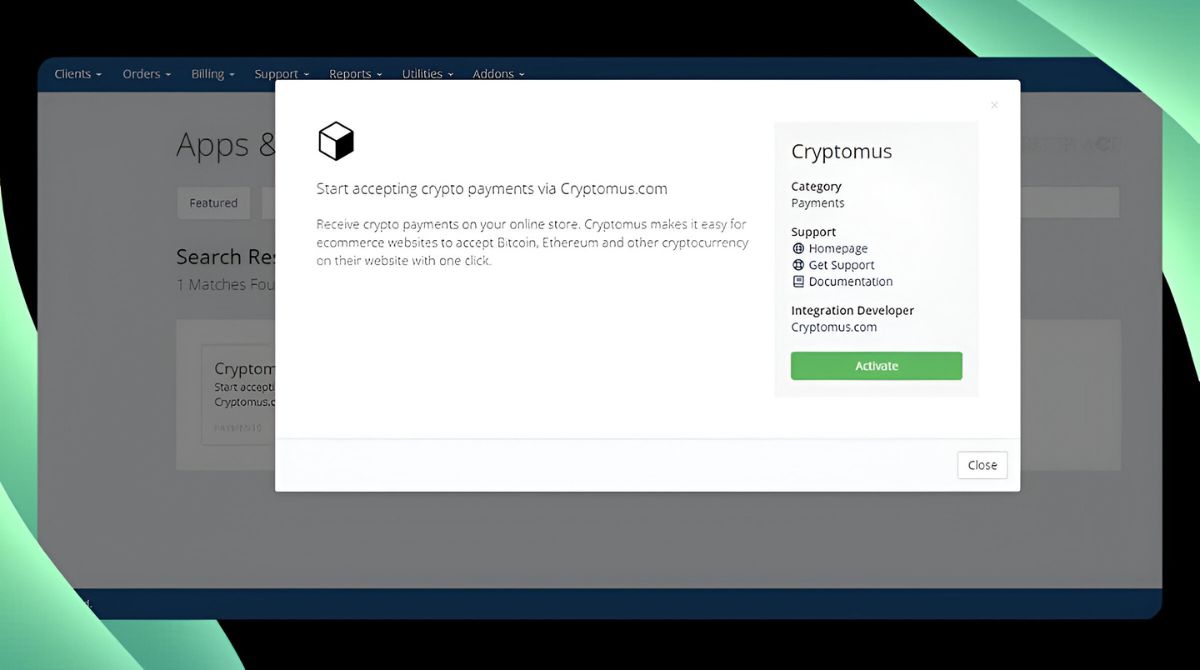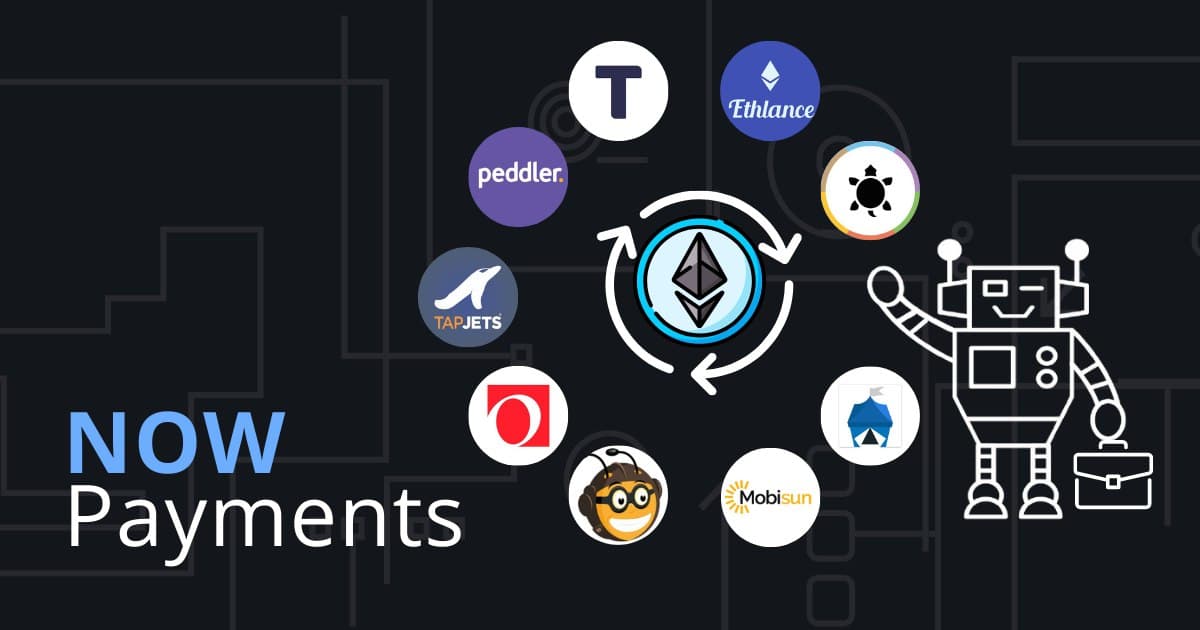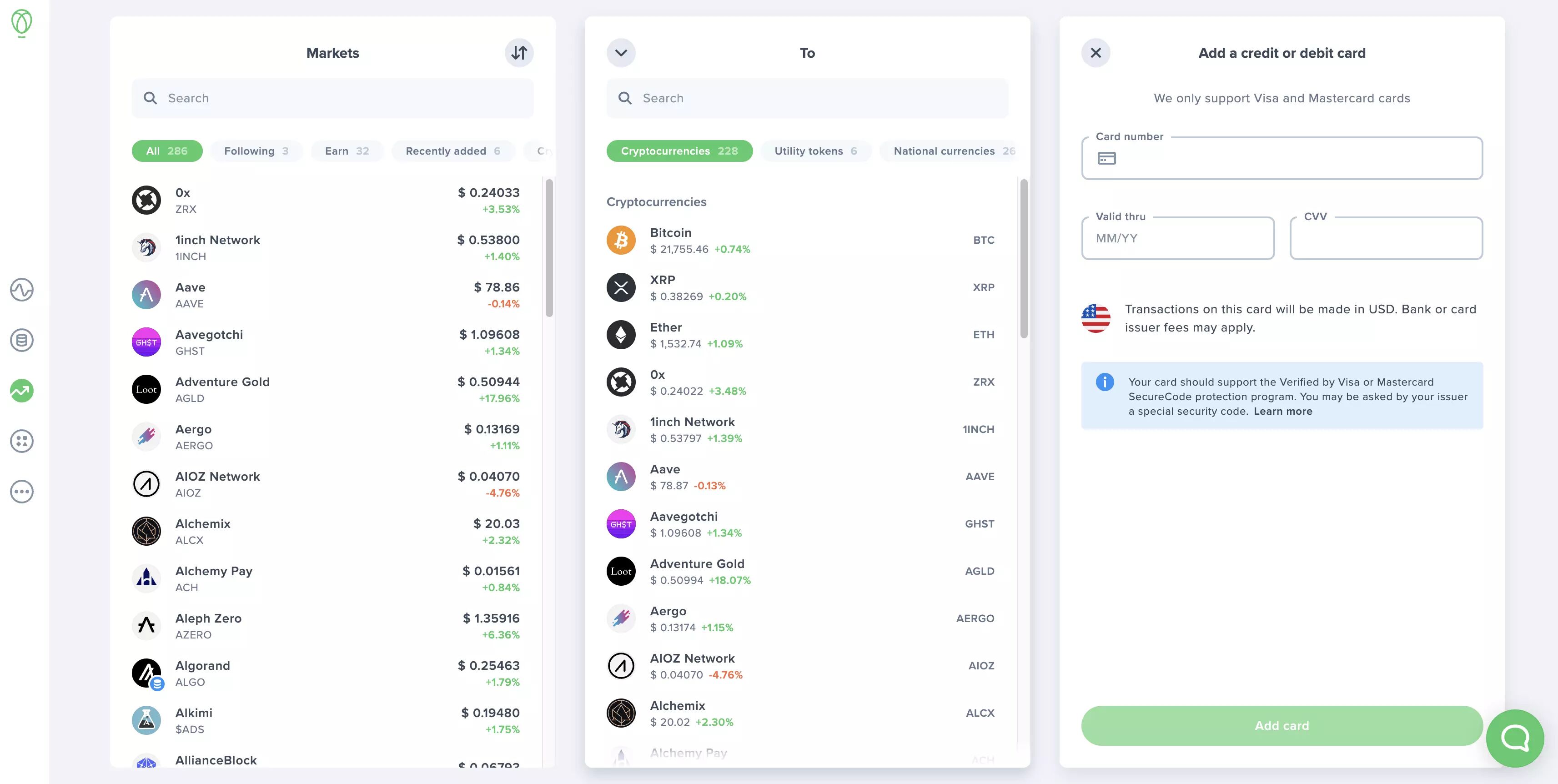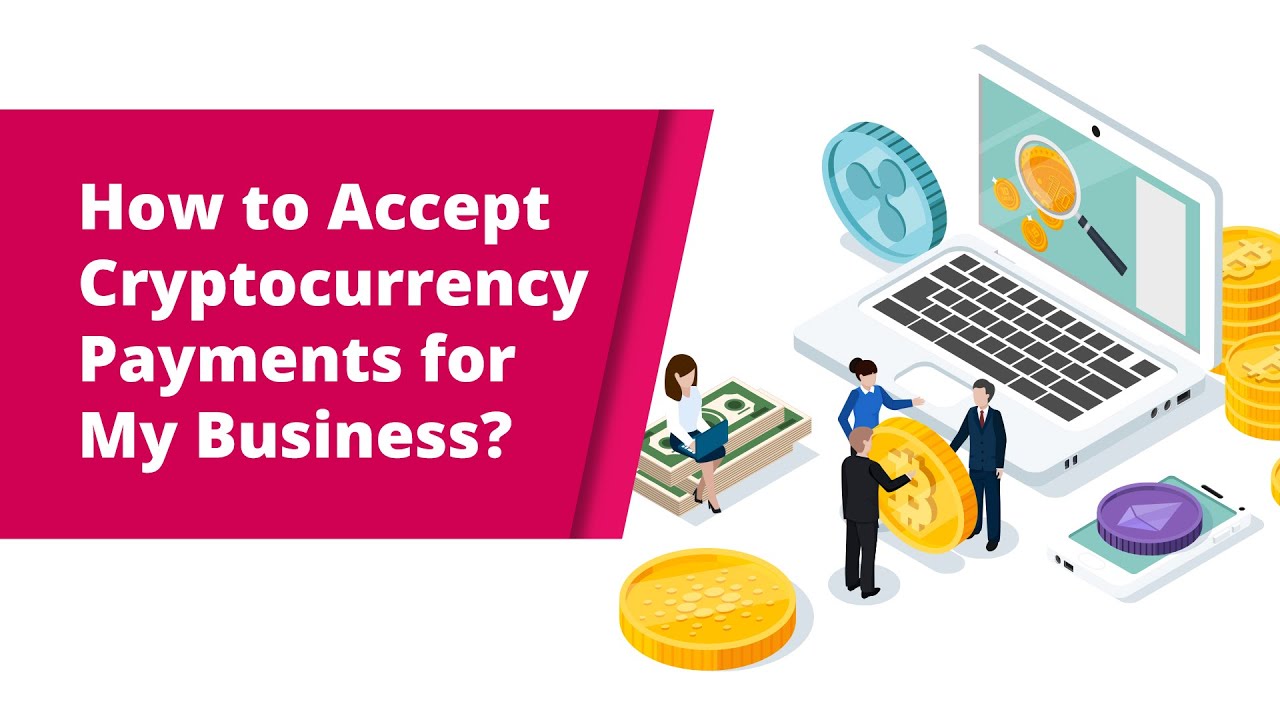Introduction
Welcome to the digital age where cryptocurrencies have emerged as an innovative form of digital currency. As the world becomes increasingly connected, accepting crypto payments on your website is becoming more important than ever. Whether you run an e-commerce platform or offer services online, embracing cryptocurrencies can open up new opportunities for your business.
But why should you consider accepting crypto payments in the first place? Cryptocurrencies offer several advantages that traditional payment methods simply cannot match. First and foremost, cryptocurrencies provide a fast and secure way to transfer funds globally. Transactions are processed almost instantaneously, eliminating the need for lengthy waiting periods or costly intermediaries.
Another key benefit of accepting crypto payments is the potential for a wider customer base. Crypto enthusiasts from around the world are actively seeking businesses that accept digital currencies, providing you with access to a global market and potentially increasing your customer base.
Moreover, by accepting cryptocurrencies, you can tap into the growing trend of decentralization and financial autonomy. With no central authority controlling the transactions, crypto payments offer users enhanced privacy and independence.
To begin accepting crypto payments on your website, you will need to set up a crypto wallet. A crypto wallet is a digital tool that allows you to store, send, and receive cryptocurrencies. There are various types of wallets to choose from, including online wallets, hardware wallets, and software wallets. Each has its own advantages and security measures, so it’s important to choose the option that best suits your needs.
Next, you’ll need to decide which cryptocurrency to accept on your website. While Bitcoin is the most well-known and widely accepted cryptocurrency, there are numerous other options to consider, such as Ethereum, Litecoin, and Ripple. Research each cryptocurrency’s features, popularity, and potential target market to make an informed decision.
Once you have your wallet and have decided on a cryptocurrency, it’s time to integrate a crypto payment gateway into your website. A crypto payment gateway allows you to seamlessly process and verify crypto transactions. There are numerous gateways available, each with its own set of features and fees. It’s important to choose a reputable and user-friendly gateway that aligns with your business needs.
In the following sections, we will provide a step-by-step guide on how to accept crypto payments on your website, tackle potential security challenges, and explore ways to market your website’s acceptance of cryptocurrencies. Let’s embark on this exciting journey and unlock the potential that crypto payments offer for your online business.
Why Accept Crypto Payments?
As technology continues to evolve, cryptocurrencies have emerged as a promising alternative to traditional payment methods. But why should you consider accepting crypto payments on your website? Here are several compelling reasons to embrace this digital revolution:
1. Global Reach: By accepting cryptocurrencies, you can expand your customer base beyond geographic boundaries. Crypto enthusiasts from around the world actively seek businesses that accept digital currencies, providing you with access to a global market. This can result in increased sales and revenue for your business.
2. Faster Transactions: Unlike traditional payment methods that involve intermediaries and lengthy processing times, crypto payments are processed almost instantly. This means that customers can make purchases and complete transactions quickly, resulting in a smoother and more efficient shopping experience.
3. Lower Transaction Fees: Cryptocurrencies offer lower transaction fees compared to traditional payment methods. This is especially beneficial for businesses that engage in global transactions, as the cost savings from reduced fees can add up significantly over time.
4. Enhanced Security: Cryptocurrencies are built on blockchain technology, which provides an additional layer of security compared to traditional methods. Transactions are securely recorded and cannot be altered or manipulated. This can give both you and your customers peace of mind knowing that their financial information is protected.
5. Financial Autonomy: With cryptocurrencies, users have greater control and autonomy over their finances. Transactions are peer-to-peer, eliminating the need for banks or intermediaries. This empowers individuals to have more control over their money and can foster a sense of financial independence.
6. Innovation and Future-Proofing: Accepting crypto payments positions your business as an early adopter of innovative technologies. It showcases your willingness to adapt to emerging trends, which can help you stay ahead of the competition and attract tech-savvy customers.
By accepting crypto payments on your website, you are not only embracing the potential advantages that cryptocurrencies offer but also future-proofing your business by keeping up with the evolving digital landscape. The convenience, security, and global accessibility of crypto payments can transform the way you do business, opening up new opportunities and appealing to a wider audience.
How to Set Up a Crypto Wallet
If you’re considering accepting crypto payments on your website, the first step is to set up a crypto wallet. A crypto wallet is a digital tool that allows you to store, send, and receive cryptocurrencies securely. Here’s a step-by-step guide to help you get started:
1. Choose the Right Wallet: There are different types of crypto wallets to choose from, including online wallets, hardware wallets, and software wallets. Each has its own features, benefits, and security measures. Online wallets are convenient but may have higher security risks, while hardware wallets offer the highest level of security but require a physical device. Research and choose the wallet that best suits your needs.
2. Download or Purchase the Wallet: Once you have decided on the type of wallet, you will need to either download the wallet software or purchase a hardware wallet. Most cryptocurrency projects have their own official wallets, which you can download from their website. For hardware wallets, choose a reputable brand and follow the manufacturer’s instructions for setting it up.
3. Create a Wallet: After downloading the wallet software or setting up the hardware wallet, you will need to create a new wallet. This typically involves generating a unique seed phrase or private key, which is used to access your wallet and authenticate transactions. Make sure to store this seed phrase securely as it is crucial for wallet recovery.
4. Secure Your Wallet: Take steps to enhance the security of your wallet. Set up a strong password or PIN to protect access to your wallet. Enable two-factor authentication if available. Regularly update your wallet software and be cautious of phishing attempts or suspicious links that could compromise the security of your wallet.
5. Receive and Send Cryptocurrencies: Once your wallet is set up, you will be provided with a unique public address for each supported cryptocurrency. This address acts as your wallet’s receiving address. To receive crypto payments on your website, simply share this address with your customers. Additionally, you can use your wallet to send cryptocurrencies to other addresses by inputting the recipient’s wallet address and the desired amount to be sent.
6. Back Up Your Wallet: Safeguard your wallet by regularly backing up your seed phrase or private keys. This creates a copy of your wallet’s information that can be used to restore your wallet in case of loss, theft, or hardware failure. Store your backup in a secure location, such as an encrypted USB drive or a password-protected cloud storage service.
7. Educate Yourself: As you venture into the world of crypto wallets, it’s important to educate yourself about best practices for wallet security and cryptocurrency management. Stay informed about the latest security measures, updates, and potential vulnerabilities in the crypto space to ensure that your wallet remains protected.
Setting up a crypto wallet is a crucial step in accepting crypto payments on your website. By following these steps and implementing robust security measures, you can confidently store and manage cryptocurrencies while providing a secure payment option for your customers.
Choosing the Right Cryptocurrency for Your Website
When it comes to accepting crypto payments on your website, it’s important to choose the right cryptocurrency that aligns with your business goals and target audience. While Bitcoin is the most well-known and widely accepted cryptocurrency, there are several other options to consider. Here are some factors to consider when selecting the right cryptocurrency:
1. Popularity and Acceptance: Bitcoin continues to dominate the cryptocurrency market, making it a safe bet for accepting payments. It has widespread acceptance and is supported by numerous payment processors and wallets. However, depending on your niche or industry, there may be other cryptocurrencies gaining popularity and adoption. Research the latest trends and assess whether accepting alternative cryptocurrencies can cater to a specific demographic or customer base.
2. Security and Stability: Cryptocurrency markets can be volatile, so it’s essential to choose a cryptocurrency that offers stability and security. Look for cryptocurrencies with established track records, robust technology, and strong communities behind them. This can help mitigate the risk of price volatility and ensure a reliable payment option for your customers.
3. Market Cap and Liquidity: Consider the market capitalization and liquidity of a cryptocurrency before accepting it on your website. Higher market cap and liquidity indicate a larger user base and greater ease of converting the cryptocurrency into fiat currency if necessary. This can be crucial for managing cash flow and expanding your business operations.
4. Transaction Speed and Fees: Different cryptocurrencies offer varying transaction speeds and fees. Bitcoin, for instance, can sometimes experience network congestion and higher transaction fees during peak periods. Alternatively, there are cryptocurrencies like Litecoin and Ripple that offer faster transaction times and lower fees. Assess the needs of your business and customers to determine the ideal balance between speed and cost-effectiveness.
5. Your Target Audience: Understanding your target audience is crucial when choosing a cryptocurrency. Research which cryptocurrencies are popular among your demographic and analyze their preferences. For instance, younger tech-savvy customers may lean towards alternative cryptocurrencies like Ethereum or Cardano, while older individuals may be more familiar with Bitcoin. Tailor your cryptocurrency choices to cater to the preferences and needs of your target audience.
6. Integration and Support: Ensure that the cryptocurrency you choose can be seamlessly integrated into your website. Check for available plugins, APIs, and payment gateway integrations that support the cryptocurrency you are interested in. This will make the implementation process smoother and provide a better user experience for your customers.
7. Regulatory Considerations: Keep in mind the legal and regulatory environment surrounding the cryptocurrencies you are considering. Some countries have specific regulations and requirements for accepting and handling digital currencies. Ensure that you comply with all applicable laws and regulations to avoid any legal complications.
By carefully evaluating these factors, you can make an informed decision on the right cryptocurrency for your website. Remember that you can also offer multiple cryptocurrency payment options to cater to a broader range of customers and diversify your payment offerings.
Integrating Crypto Payment Gateways
Once you have chosen the cryptocurrency you want to accept on your website, the next step is to integrate a crypto payment gateway. A crypto payment gateway is a service that facilitates the processing and verification of crypto transactions. Here’s a guide on how to seamlessly integrate a crypto payment gateway:
1. Research Available Payment Gateways: Begin by researching the available crypto payment gateway options. There are various gateways to choose from, such as CoinGate, BitPay, and Coinbase Commerce. Each gateway may have different features, transaction fees, and supported cryptocurrencies. Compare their offerings and choose the one that best suits your business requirements.
2. Sign Up and Create an Account: Once you have selected a crypto payment gateway, sign up and create an account on their platform. This typically involves providing basic information about your business, such as your website URL, business details, and contact information.
3. Set Up API Keys: After creating an account, the payment gateway will provide you with API keys. These keys are necessary to securely communicate between your website and the payment gateway’s platform. Follow the provider’s instructions to set up and configure the API keys to enable smooth integration.
4. Install the Gateway Plugin: Most crypto payment gateways offer plugins or extensions for popular e-commerce platforms such as WooCommerce, Shopify, and Magento. Install the relevant plugin for your platform and configure it with your API keys. This allows the payment gateway to handle transactions seamlessly on your website.
5. Customize Payment Settings: Within the plugin settings, you can customize the payment options and configurations according to your preferences. Set the supported cryptocurrencies, payment methods, transaction currencies, and any additional settings provided by the gateway. This enables you to align the payment gateway with your business model and target audience.
6. Test the Integration: Before going live, it’s important to test the integration between your website and the crypto payment gateway. The gateway provider usually offers a test or sandbox environment where you can simulate transactions without using actual cryptocurrency. Perform various transaction scenarios to ensure that everything is functioning as expected.
7. Ensure Security Measures: Cryptocurrency transactions involve sensitive financial information. Therefore, it’s essential to implement security measures to protect your customers and yourself. Ensure that your website is secure with SSL encryption, follow best practices for data protection, and stay up-to-date with security patches and updates provided by the payment gateway.
8. Launch and Monitor: Once you have successfully integrated the crypto payment gateway and tested the transactions, you are ready to launch and start accepting crypto payments on your website. Monitor the payment process closely to ensure smooth transactions and address any issues promptly.
Integrating a crypto payment gateway enables you to offer a seamless and secure payment experience to your customers. By following the steps above, you can easily integrate the gateway of your choice and start accepting cryptocurrency payments, expanding your payment options and tapping into the growing market of cryptocurrency enthusiasts.
Step-by-Step Guide to Accepting Crypto Payments on Your Website
Accepting crypto payments on your website can open up new opportunities for your business. Here is a step-by-step guide to help you seamlessly integrate crypto payments into your website:
Step 1: Set Up a Crypto Wallet: Before you can start accepting crypto payments, you need to set up a crypto wallet. Choose a wallet that suits your needs, whether it’s an online wallet, hardware wallet, or software wallet. This will allow you to securely store, send, and receive cryptocurrencies.
Step 2: Select a Cryptocurrency: Determine which cryptocurrency you want to accept on your website. Bitcoin is the most widely accepted, but you can also consider popular alternatives like Ethereum, Litecoin, or Ripple. Research the features, compatibility, and target audience of each cryptocurrency to make an informed decision.
Step 3: Choose a Crypto Payment Gateway: Select a reliable crypto payment gateway that supports the cryptocurrency you have chosen. Some popular options include CoinGate, BitPay, and Coinbase Commerce. Sign up for an account and obtain the necessary API keys to integrate the payment gateway with your website.
Step 4: Integrate the Payment Gateway: Install the payment gateway plugin provided by the chosen gateway provider. This plugin will enable seamless integration between your website and the payment gateway, allowing customers to make crypto payments. Follow the installation instructions provided by the gateway provider and configure the settings according to your preferences.
Step 5: Customize Payment Options: Within the payment gateway plugin, customize the payment options to align with your business model. Choose the accepted cryptocurrencies, set transaction currencies, specify conversion rates, if applicable, and configure any additional payment settings provided by the gateway. This ensures smooth payment processing for your customers.
Step 6: Test Transactions: Before making your crypto payment option live, test the payment process thoroughly to ensure everything is functioning as expected. Use the test environment provided by the payment gateway to simulate transactions and confirm that payments are processed correctly and reflected in your wallet. Verify that payment notifications are being received as well.
Step 7: Go Live and Monitor: Once you are satisfied with the testing results, it’s time to make your crypto payment option live on your website. Launch the feature and monitor the payment process closely. Keep an eye on transaction notifications, conversion rates, and any potential issues that may arise. Regularly check your wallet balance to ensure funds are being received correctly.
Step 8: Provide Clear Payment Instructions: To encourage customers to use the crypto payment option, provide clear instructions on how to make a crypto payment on your website. Explain the steps they need to take, such as selecting the cryptocurrency, scanning a QR code, or inputting a wallet address. Make the process as straightforward as possible for a positive user experience.
By following this step-by-step guide, you can seamlessly integrate crypto payments into your website, allowing your customers to transact using their preferred cryptocurrencies. Keep in mind that regular maintenance, security updates, and staying informed about the evolving crypto landscape will ensure a smooth and secure payment experience for both you and your customers.
Ensuring Security and Fraud Protection
When accepting crypto payments on your website, ensuring the security of both your business and your customers’ transactions is of utmost importance. Here are some essential measures to implement to enhance security and protect against fraud:
1. Secure Communication: Use SSL encryption to establish a secure connection between your website and users’ browsers. This protects sensitive data during transmission, such as wallet addresses, transaction details, and personal information.
2. Multi-factor Authentication: Implement multi-factor authentication (MFA) to add an extra layer of security to your accounts. This can involve verifying login attempts through an email, text message, or authenticator app, preventing unauthorized access to your crypto wallet and payment gateway account.
3. Regular Software Updates: Keep your website’s software and content management system (CMS) up to date. Regularly install security patches and updates to address vulnerabilities and protect against potential security breaches.
4. Wallet Security: Strengthen the security of your crypto wallet by setting a strong password or PIN. Use a hardware wallet whenever possible for increased security, as it keeps your private keys offline and away from potential online threats.
5. Address Verification: Implement address verification systems to ensure that customers provide valid wallet addresses. This can help prevent fraudulent transactions and minimize the risk of funds being sent to incorrect or compromised wallets.
6. Transaction Confirmation: Require customers to confirm their transactions before funds are sent. This precautionary step adds an extra layer of security by ensuring that the transaction is intentionally initiated by the customer and not the result of unauthorized access.
7. Fraud Detection Tools: Integrate fraud detection tools, such as anti-fraud algorithms and machine learning systems, to identify and prevent suspicious transactions. These tools help to minimize the risk of fraudulent activities, chargebacks, and unauthorized access.
8. Education and Awareness: Educate yourself and your customers about common crypto scams and phishing attempts. Provide resources and guidelines on how to securely store and handle cryptocurrencies. Promote awareness of potential risks to help safeguard against fraudulent activities.
9. Purchase Protection: Consider offering purchase protection mechanisms, such as escrow services or payment processors with built-in dispute resolution systems. This can provide an added layer of assurance to your customers when making crypto payments.
10. Regular Monitoring and Auditing: Monitor your crypto payment transactions regularly to detect any suspicious patterns or unauthorized activities. Perform regular audits of your website, payment gateway settings, and wallet balances to ensure their integrity.
By implementing these security measures and taking a proactive approach to fraud protection, you can create a secure environment for accepting crypto payments on your website. Prioritizing security builds trust with your customers, protects your business from potential threats, and ensures a positive experience for everyone involved.
Marketing Your Website’s Acceptance of Crypto Payments
Once you have successfully integrated crypto payments into your website, it’s essential to spread the word and market your acceptance of cryptocurrencies. By effectively promoting this payment option, you can attract new customers and capitalize on the growing popularity of digital currencies. Here are some strategies to market your website’s acceptance of crypto payments:
1. Highlight on Your Website: Make it clear and prominent on your website that you accept crypto payments. Add a dedicated section or banner that showcases the cryptocurrencies you accept and highlights the benefits of paying with digital currencies.
2. Social Media Promotion: Leverage your social media platforms to announce and promote your acceptance of crypto payments. Craft engaging posts, create eye-catching visuals, and use relevant hashtags to reach your target audience. Educate your followers about the advantages of using cryptocurrencies and how it aligns with your brand’s values.
3. Email Marketing: Use your email list to notify your subscribers about the new payment option. Create an engaging email newsletter that explains the benefits of paying with cryptocurrencies and provides clear instructions on how to do so. Consider offering special discounts or exclusive deals for customers who use this payment method.
4. Partner with Crypto Influencers or Bloggers: Collaborate with influential figures in the crypto community to promote your website’s acceptance of crypto payments. Partner with bloggers, YouTubers, or podcasters who specialize in cryptocurrencies and reach out to them for potential collaborations or sponsored content.
5. Crypto Directories and Listings: Submit your website to crypto directories and listings. These platforms serve as aggregators for businesses that accept cryptocurrencies. Make sure to provide accurate and up-to-date information about your website, such as the cryptocurrencies accepted and a brief description of your business.
6. Influencer Reviews and Testimonials: Request reviews and testimonials from satisfied customers who have used your crypto payment option. Share these positive experiences on your website and social media channels to build trust and demonstrate the value of paying with cryptocurrencies.
7. Education and Content Marketing: Educate your audience about cryptocurrencies through informative blog articles, videos, or webinars. Craft content that explains the benefits, potential risks, and the future of digital currencies. Establish yourself as an expert in the field and create trust with your audience.
8. Participate in Crypto Events and Conferences: Attend and participate in industry events and conferences related to cryptocurrencies. This provides an opportunity to network with other businesses and potential customers in the crypto space. Showcase your acceptance of crypto payments and share insights about your experiences.
9. Partnerships with Crypto Projects: Explore partnerships with established cryptocurrency projects or blockchain-based companies. Collaborations can include joint marketing campaigns, co-sponsored events, or offering exclusive discounts to each other’s customers. This can help increase your visibility within the cryptocurrency community.
10. Leverage Online Communities: Engage with online communities and forums focused on cryptocurrencies. Contribute valuable insights, answer questions, and promote your website’s acceptance of crypto payments without being overly promotional. Establish yourself as a trusted and knowledgeable resource within these communities.
By implementing these marketing strategies, you can effectively promote your website’s acceptance of crypto payments. Capitalize on the growing interest in cryptocurrencies and position your business as a forward-thinking, tech-savvy brand that meets the needs of modern consumers.
Potential Challenges and How to Overcome Them
While accepting crypto payments on your website offers numerous benefits, there are also potential challenges to consider. Understanding these challenges and implementing strategies to overcome them will help ensure a seamless and successful integration of crypto payments. Here are some common challenges and ways to overcome them:
1. Price Volatility: Cryptocurrencies are known for their price volatility. Fluctuations in the value of cryptocurrencies can create challenges when it comes to pricing products or services on your website. Consider implementing real-time conversion rates or linking prices to a stable fiat currency to mitigate the impact of price volatility.
2. Security Concerns: The security of cryptocurrency transactions is essential. Engage best practices such as encrypting sensitive customer information, implementing strong authentication methods, and using reputable payment gateways with robust security measures. Stay updated with the latest security standards and regularly audit your website for vulnerabilities.
3. Customer Education: Some customers may be unfamiliar with cryptocurrencies or hesitant to use them for transactions. Overcome this challenge by providing educational resources on your website, including simple explanations of how to use cryptocurrencies, the benefits of using them, and steps to set up a crypto wallet. Offer customer support channels to answer any questions or concerns they may have.
4. Limited Adoption: Despite the increasing popularity of cryptocurrencies, adoption is still not ubiquitous. Overcome the challenge of limited adoption by actively promoting your acceptance of crypto payments through marketing strategies outlined earlier. Highlight the benefits of this payment option to attract customers who are already comfortable using digital currencies.
5. Regulatory Compliance: The regulatory landscape surrounding cryptocurrencies can vary from country to country. Stay informed about any legal obligations and requirements related to accepting crypto payments in your jurisdiction. Consult legal professionals to ensure compliance with applicable laws and regulations to avoid any potential legal issues.
6. Transaction Speed: While cryptocurrencies are generally known for their fast transaction processing times, network congestion and high transaction volumes can sometimes cause delays. Minimize this challenge by selecting cryptocurrencies with faster transaction times and using payment gateways that can handle high transaction volumes efficiently.
7. Technical Integration: Integrating a crypto payment gateway into your website may require technical expertise. If you lack the necessary skills, consider working with a web developer or utilizing pre-built plugins and extensions specific to your e-commerce platform. Leverage the support resources and documentation provided by the payment gateway to simplify integration.
8. Reconciliation and Accounting: Managing and tracking crypto transactions for accounting and reconciliation purposes can be complex. Implement robust bookkeeping processes, keep detailed transaction records, and use tools specifically designed to handle cryptocurrency accounting. Consider utilizing accounting services or software that cater to businesses operating with cryptocurrencies.
9. Market Volatility: The cryptocurrency market itself can be highly volatile, affecting not only the value of the cryptocurrencies you accept but also customer confidence. Diversify your accepted cryptocurrencies to mitigate risks and apply sound risk management strategies. Stay informed about market trends and be prepared to adapt your strategies as the market evolves.
10. Customer Support: Providing efficient customer support for crypto payment-related inquiries is essential. Train your support team on handling crypto-related issues and anticipate common questions or concerns. Offer clear channels for customer communication and respond promptly to inquiries to ensure a positive customer experience.
By anticipating and proactively addressing these challenges, you can ensure a smoother integration of crypto payments on your website. Stay adaptable, embrace technological advancements, and continue to educate yourself and your customers about the evolving landscape of cryptocurrencies.
Conclusion
Accepting crypto payments on your website can be a game-changing decision for your business. With the potential to expand your customer base, offer faster and more secure transactions, and showcase your commitment to innovation, cryptocurrencies provide a unique opportunity for growth.
In this guide, we discussed the importance of accepting crypto payments and provided a step-by-step process to help you integrate this payment option seamlessly. From setting up a crypto wallet and choosing the right cryptocurrency to integrating a crypto payment gateway and ensuring security measures, each step plays a crucial role in establishing a successful crypto payment system.
Additionally, we explored ways to effectively market your website’s acceptance of crypto payments, including social media promotion, influencer collaborations, and educational content. By implementing these marketing strategies, you can maximize the visibility of your crypto payment option and attract customers who appreciate the convenience and security of digital currencies.
Despite the potential challenges, such as price volatility and regulatory compliance, it’s essential to approach them with knowledge and proactive measures. By staying informed, implementing security protocols, educating your customers, and leveraging the support of reputable payment gateways, you can overcome these obstacles and build confidence in your crypto payment system.
As cryptocurrencies continue to gain momentum and acceptance worldwide, integrating crypto payments on your website positions your business at the forefront of technological advancements and financial innovation. By offering your customers a diverse range of payment options and staying ahead of the curve, you can establish a competitive edge and contribute to the growth of the digital economy.
So, embrace the opportunities that cryptocurrencies offer, adapt to the changing needs of the market, and continuously evolve your crypto payment system to provide a seamless and secure experience for your customers. By doing so, you’ll be well on your way to reaping the benefits of accepting crypto payments on your website.

























